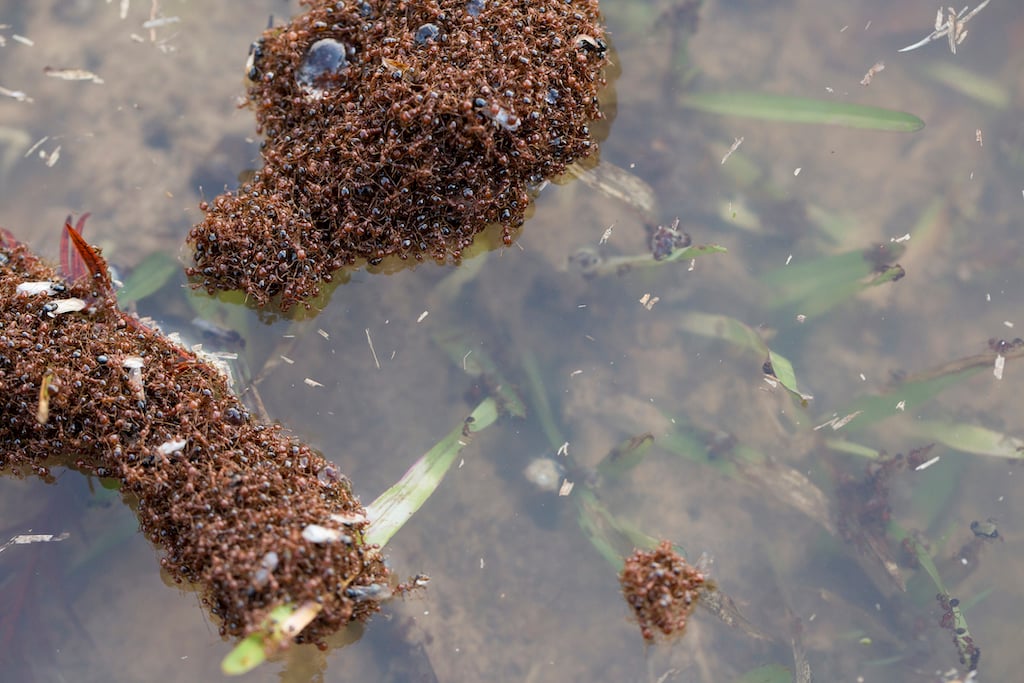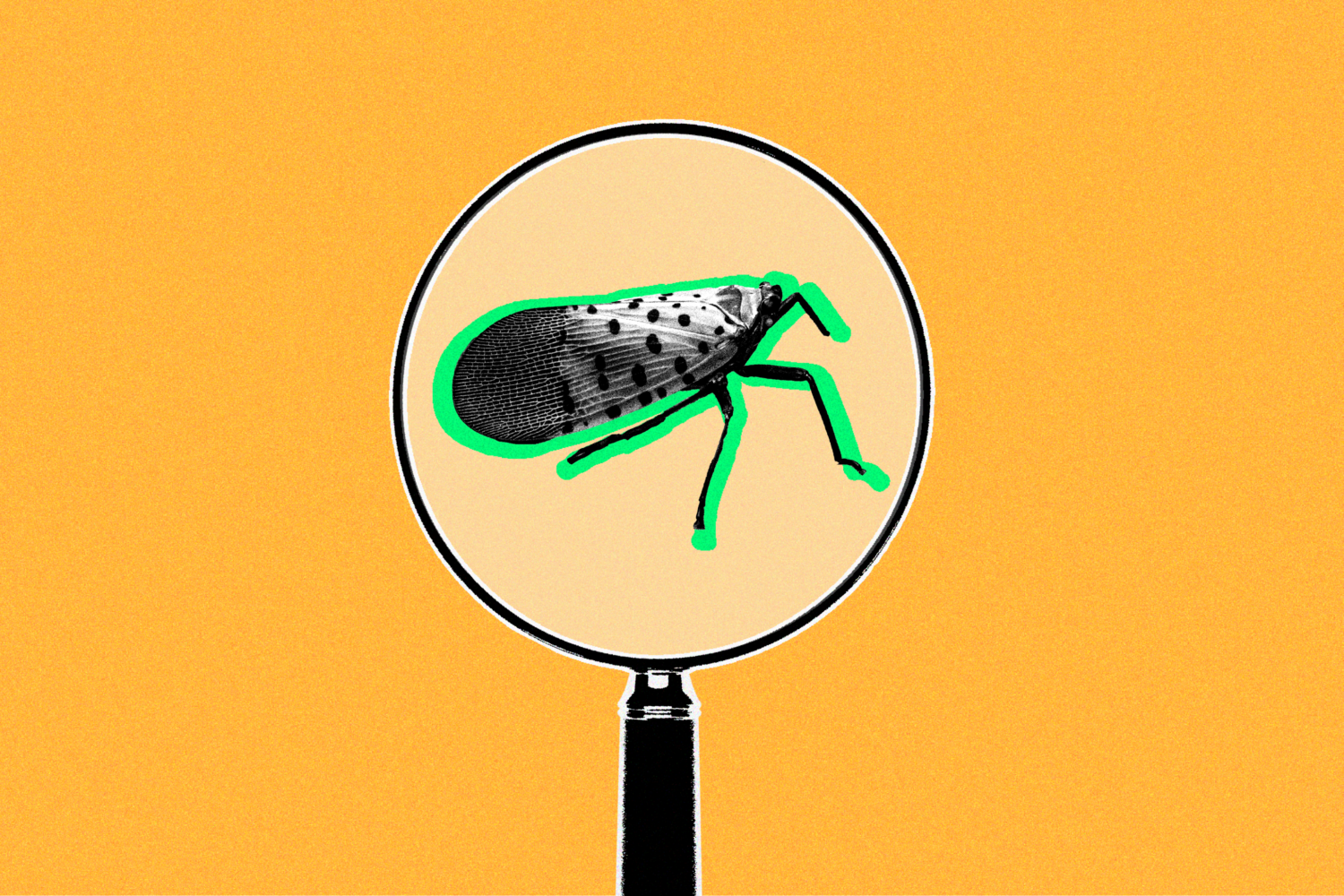The Spotted Lanternfly, an invasive species native to China, is on a mission to ruin your summer sangria.
While the tiny bugs may appear harmless, even gorgeous, they’re far from it. The flies were first observed in the US in 2014, and have since spread across the northeastern seaboard, leaving agriculture damaged in their wake.
The flies feed on fruity vines and woody trees: think grapes, hops, peaches, apples, and the like. Feeding on vines can cause grape plants to wilt or die. Lanternflies also excrete “honeydew”—a sugary liquid—that can cause crops to mold. Basically, the lanternfly is a threat to breweries and wineries across the coast—including here in the Washington, DC, region.
Damon Callis, owner of Maryland’s Urban Winery (315 Stewart Ave., Silver Spring), has dealt with the bugs firsthand. He says they’re creating issues all the way down the supply chain. When the quality and amount of fruit that he’s able to collect decreases, he says it makes it more difficult to “produce the high-quality wine that Maryland is known for.”
“It’s like Covid for the vines,” Callis says. “It’s terrible.”
Other area winemakers who have yet to spot a lanternfly are holding their breath, hoping the bugs avoid their vineyards.
Melissa Aellen, winemaker at Linganore Winecellars (13601 Glissans Mill Rd., Mount Airy), says that while she has not yet seen a live lanternfly, she did spot egg masses on the property this winter. The Linganore staff is expecting the flies to arrive at some point in the next year or two. Still, there isn’t much they can do to prepare, Aellen says.
“We squish them when we see them,” Aellen says. “We ask everyone else that we know on the face of the planet to squish them when they see them.”
Aellen says that winemakers on the East Coast are not strangers to pests interfering with their crop. But what sets the lanternflies apart, she says, is that they’re not just damaging the fruit, but the vines themselves. Vines that were planted more than 30 years ago could be severely hurt, she says.
That has happened at Fiore Winery & Distillery (3026 Whiteford Rd., Pylesville) in Maryland. Mike Fiore, the vineyard’s owner, says that last summer his vines were hit hard with the pests. More than a thousand vines were damaged in 2022, vines that had been planted 40 years ago. Fiore hopes that removing the old, damaged plants will slow down the spread and keep the flies from laying their eggs there.
This spring, Fiore says things are “so far, so good.” He has yet to spot any damage in his vineyards, but says now is the time to take preventative action. While he’s been judicious about thwarting the bugs, he’s also skeptical of using too many pesticides, especially if he doesn’t have to.
“My theory is, if you can kill somebody with a slingshot, don’t use an H-bomb,” Fiore says.
Linganore and Stone Tower Winery, a Virginia vineyard (19925 Hogback Mountain Rd., Leesburg), both cut down all of their Trees of Heaven—plants known to attract lanternflies. They’ll search for egg sacks, or put tape around vines to trap the bugs. Other than that, they just wait. “If you have a vineyard, you worry,” Fiore says.
Preston Thomas is the winegrower at Stone Tower, which has yet to encounter any traces of lanternflies. But they’re anxiously awaiting the day that they do.
“We’re not entirely sure what the spotted lantern fly is going to do. We know what they can do. We’re all just kind of sitting around like, well, what is actually going to happen?” says Thomas. “That’s kind of where the hesitation or the nervousness comes from.”















